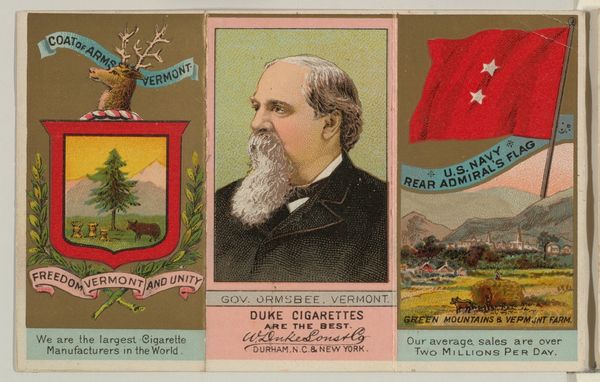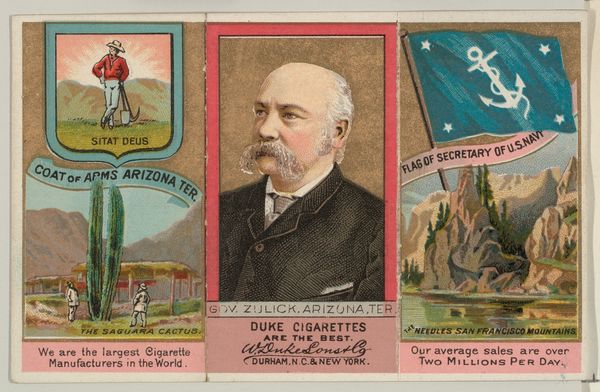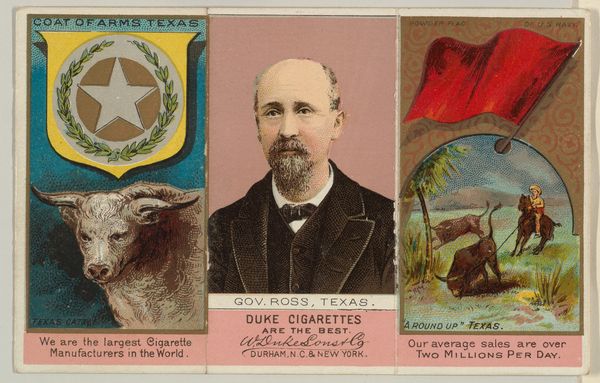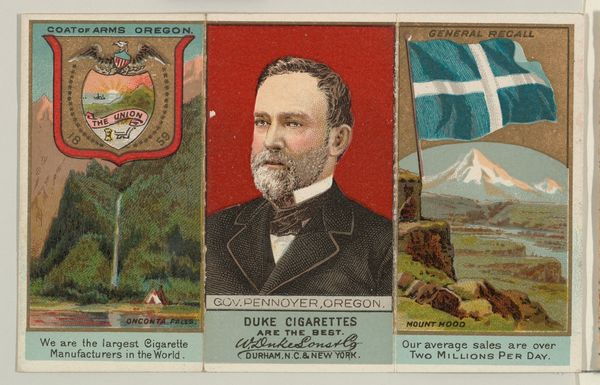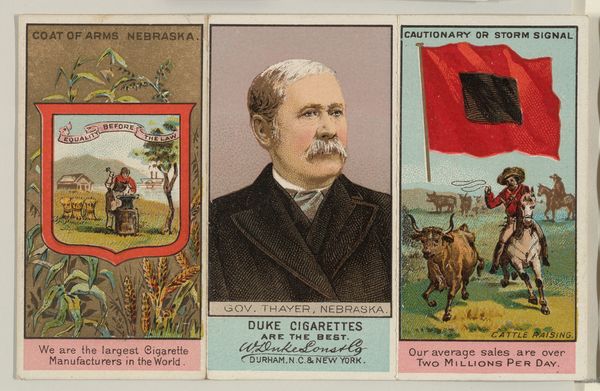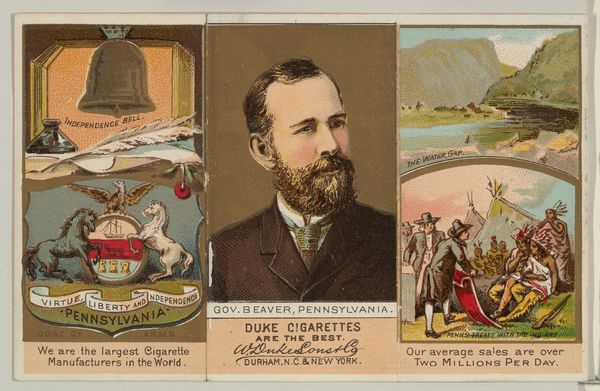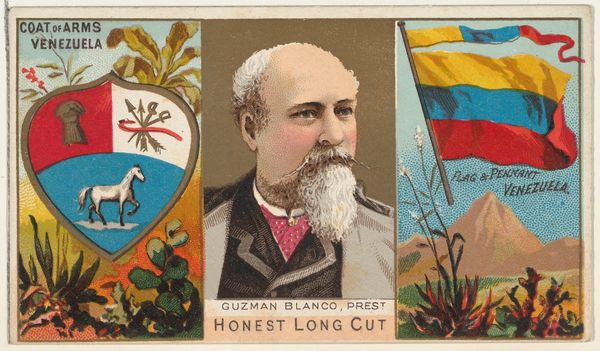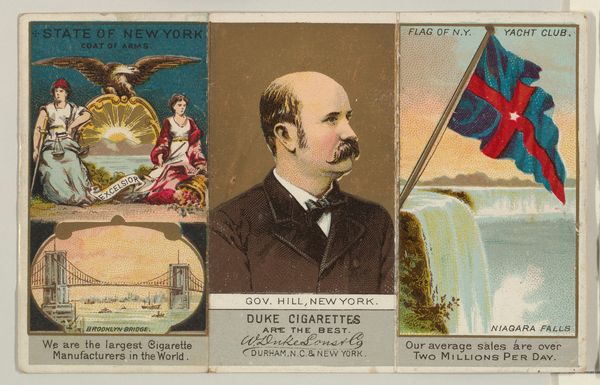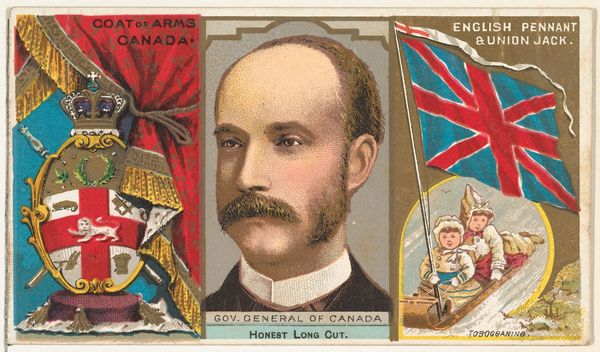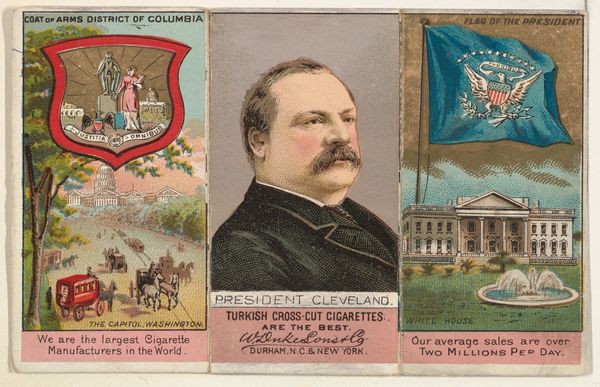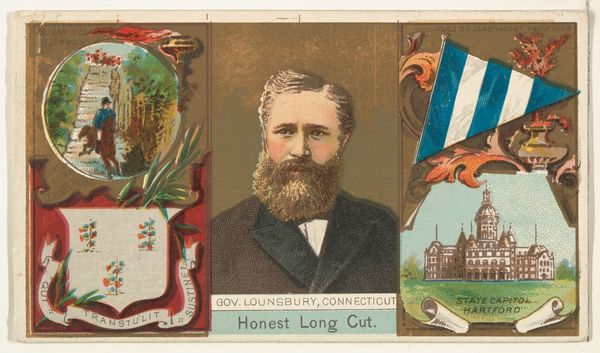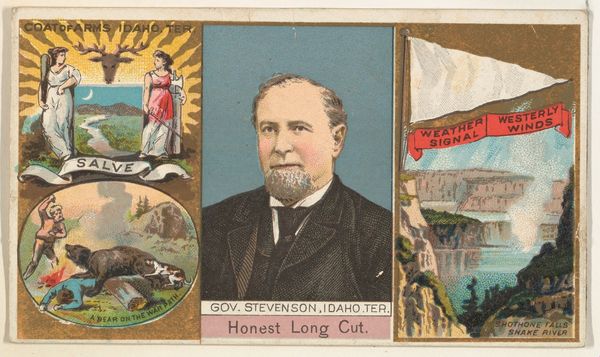
Prince of Wales, Australia, from the Rulers, Flags, and Coats of Arms series (N126-2) issued by W. Duke, Sons & Co. 1888
0:00
0:00
Dimensions: Sheet: 2 3/4 × 4 1/4 in. (7 × 10.8 cm) Sheet (folded): 2 3/4 × 1 7/16 in. (7 × 3.6 cm)
Copyright: Public Domain
Curator: This lithograph, dating back to 1888, is part of the "Rulers, Flags, and Coats of Arms" series produced by W. Duke, Sons & Co. The piece, residing at the Metropolitan Museum of Art, offers an intriguing study in symbolic representation. Editor: At first glance, the composition feels very rigidly structured. The divisions are stark, almost like examining a triptych in miniature, bisected into three distinct rectangular sections. Curator: Indeed. Consider how each segment operates visually. The left panel presents Australia’s coat of arms, filled with distinct iconography such as an anchor, wheat, caduceus, and golden ram—the colors laid out across the emblem with graphic efficiency. Note also the contrast between the detailed leaves beneath the coat of arms, compared to the blank background in the central section. Editor: I'm struck by the figure of the Prince. It is framed as a straightforward portrait, and that blue speckled field flattens any attempt at spatial depth. The flag with the kangaroo presents its own language as well, using this beloved national animal. These symbols communicate so much about cultural identity. How might someone in the 19th century have understood the pairing of British royalty alongside emerging Australian symbols? Curator: The Prince occupies a position of visual prominence through his scale, color palette and central location on the work. I'd like to draw attention to Duke's commercial addition as well: the stark lettering placed behind the subject which adds more density to the frame. Editor: It speaks volumes about the cultural ambitions embedded in something as simple as a cigarette card. It aimed not just to sell tobacco, but also disseminate symbols of power and nationhood to a mass audience. Curator: A fascinating point, viewing the composition and placement through this new lens. Editor: This small lithograph condenses the grand theater of empire, commercialism, and identity into something easily consumable and shareable. Curator: Yes, our readings emphasize how both form and symbolic language intertwine to shape the meaning within such an everyday object.
Comments
No comments
Be the first to comment and join the conversation on the ultimate creative platform.

